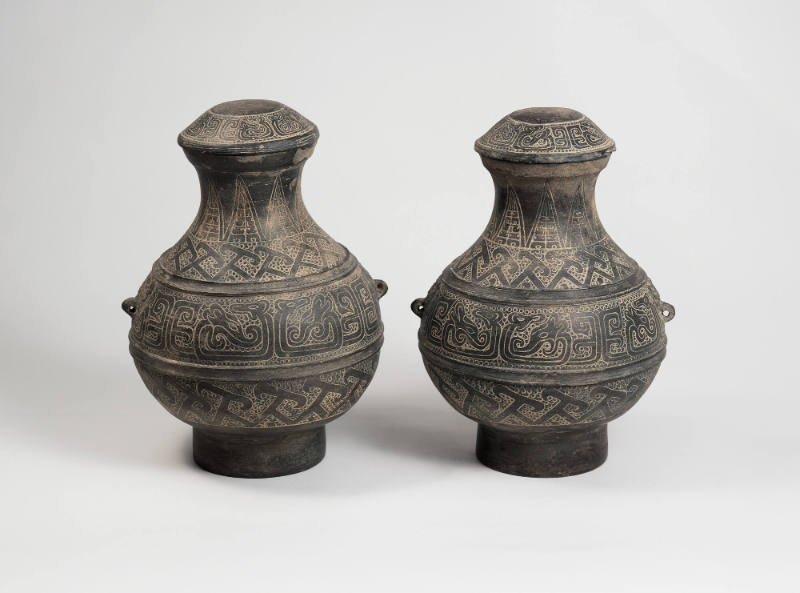


Object Details
Culture
Southern China
Western Han dynasty (206 BC-AD 9)
Date
2nd or 1st century BC
Medium
Ash-glazed stoneware
Dimensions
Height: 15 inches (38.1 cm)
Credit Line
Gift of F. Eunice Shatzman, Class of 1949, and Herbert F. Shatzman
Object
Number
2008.072.032
BRIEF DESCRIPTIONThis clay vessel in the shape of an owl was made to guard and protect a tomb during(…)
BRIEF DESCRIPTIONThis clay vessel in the shape of an owl was made to guard and protect a tomb during the Han dynasty.WHERE WAS IT MADE?The form of this owl relates to lead-glazed earthenware owl containers excavated from tombs in Henan province, but it is made of ash-glazed stoneware, suggesting that it was made in southern China, perhaps Guangdong province.HOW WAS IT MADE?The owl was made using a combination of different clay hand-building techniques. The glaze on this vessel was created by sifting wood ash over the vessel prior to firing. Wood ash forms a natural glaze, which potters in southeastern China may have begun using as early as the 2nd millennium BC. Notice the use of both incised lines and raised bumps of clay to indicate feathers on the body and head of the owl.HOW WAS IT USED?The imposing presence of the owl could have served to protect the tomb from malevolent spirits or its function might have been as mundane as to deter rodents from devouring the grain or other food offerings meant for the po soul.Tombs serve as a house for the spirit of the deceased. They were filled with objects to provide for the spirit and prevent the spirit from turning into a ghost that would harass the living. Many of the funerary practices of the Han were adopted from the preceding Bronze Age. Han tombs provide us with a wealth of information about daily life and social practices because people from all social classes—not just imperial families—constructed tombs filled with objects from their lives. Imperial tombs were large-scale projects that took many years to build—often, emperors began work on their tombs in the second year of their reigns and reserved one-third of their personal treasury for the construction. More modest tombs consisted of several chambers built into the earth with stone tiles, each filled with objects for entertainment, feasting, housing, and protection. Painted on the walls are scenes from daily life, memorials of the deceased, and funeral processions.WHY DOES IT LOOK LIKE THIS?Notice how alert the owl looks. Owl figures were common in tomb furnishings, because their ability to see in all directions and their nocturnal hunting habits would have made them particularly effective at watching over a dark tomb. Bronze containers in the form of a pair of owls standing back to back, used for storing liquid offerings, were a standard type in the Shang dynasty. Many other examples of ceramic containers in the form of owls are known.












